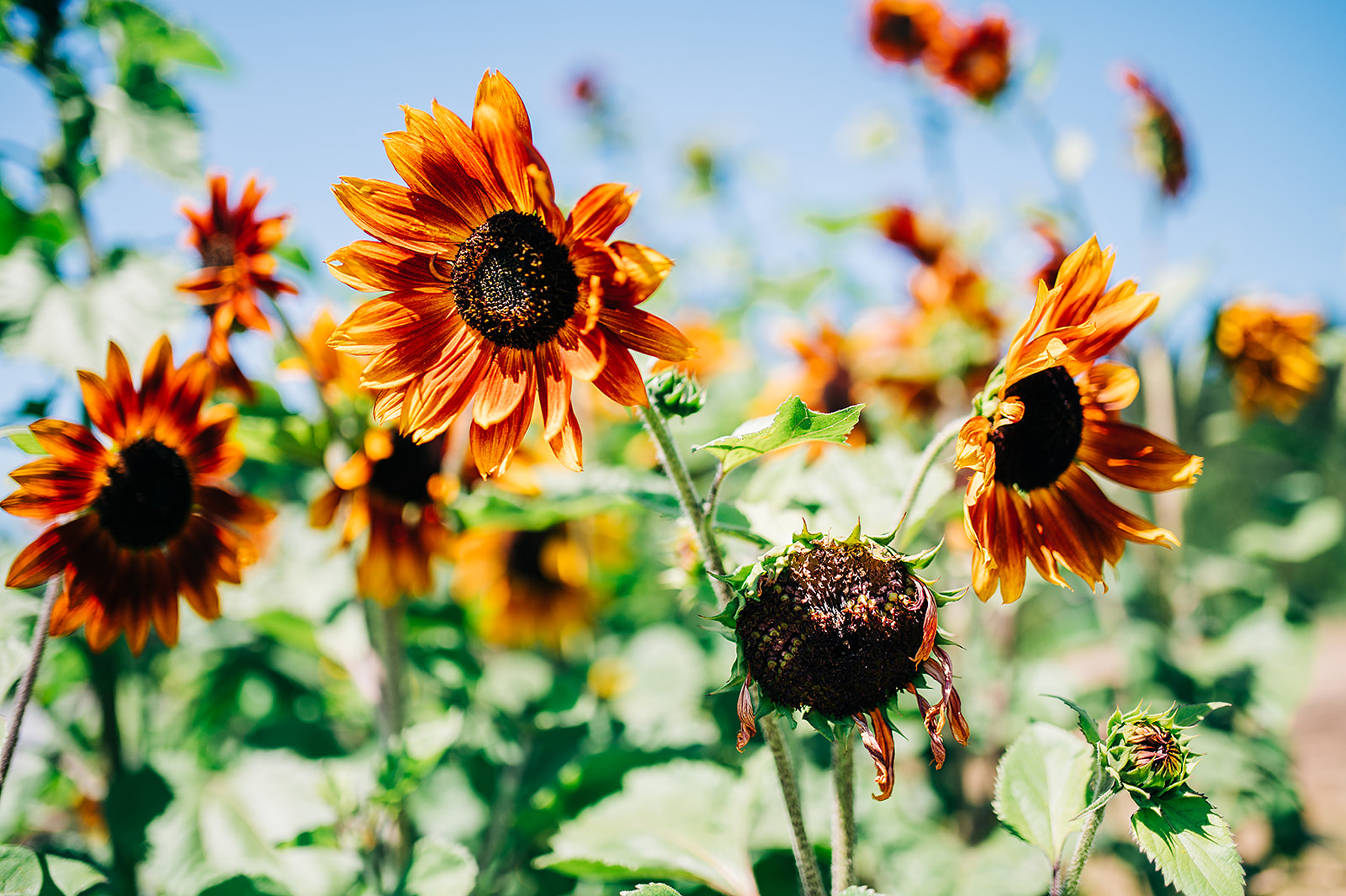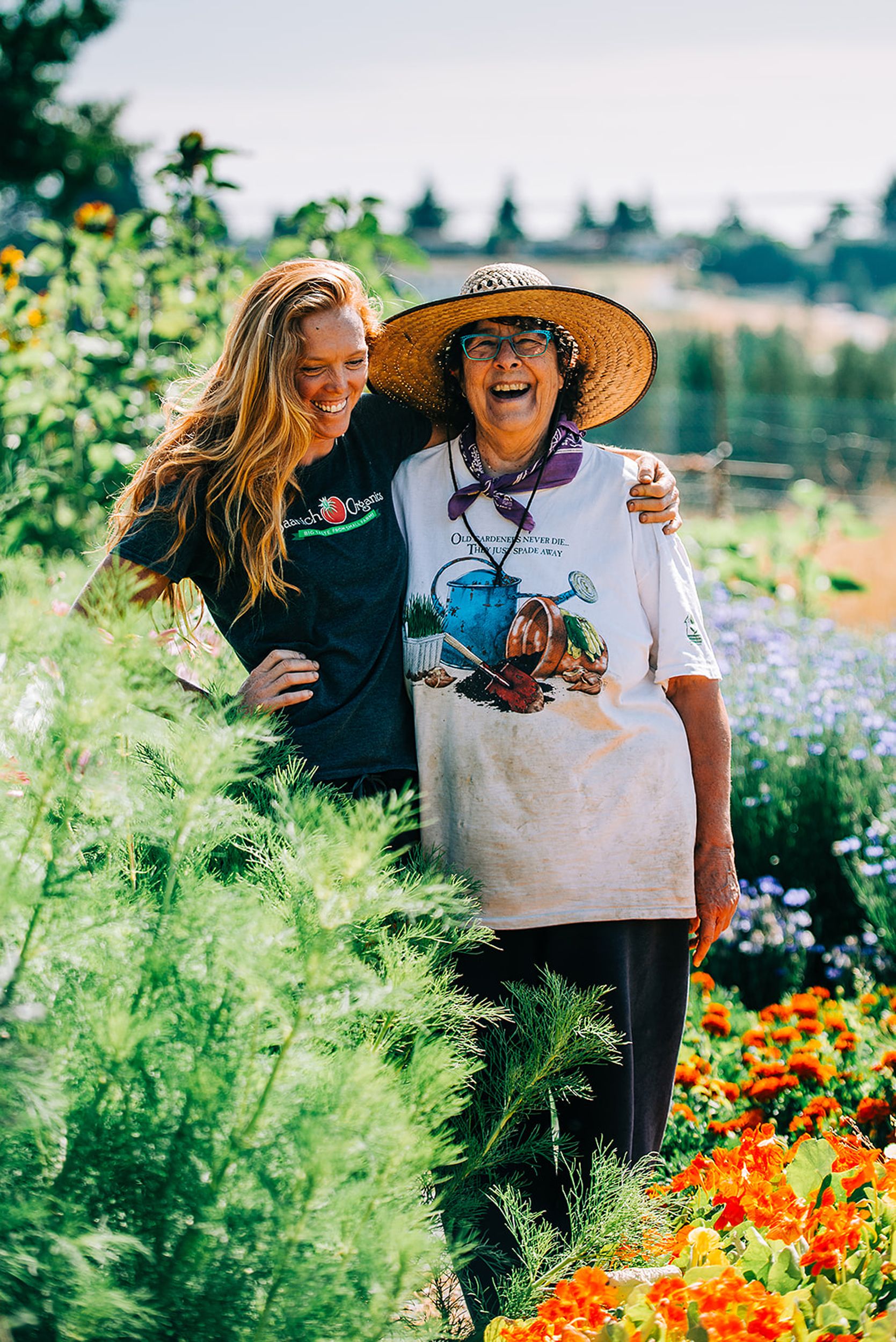Starting Local with Seeds
Many of us shop local, buying lettuce, beans and other produce at farmers’ markets or nearby farms. Many of us, especially this year, have started home gardens, too. But how many of us consider whether the seeds of the plants we buy or raise are grown locally as well?
“Small-scale seed farming is being reinvigorated right now,” says Theresa Heinekey, manager of Seeds of the Revolution, a Vancouver Island seed company run by Saanich Organics.
So what’s driving the return to local seed growing? And what are the benefits to Island farmers and consumers?
Why local seeds?
B.C. had a well-established seed growing industry that peaked in the 1940s, according to Keeley Nixon, coordinator for the BC Eco Seed Co-op, a cooperative of 20-plus B.C. farmers who grow and jointly market B.C.-grown seeds. By the 1950s, however, large companies from outside the region were dominating seed production. The Bauta Family Initiative on Canadian Seed Security, which promotes food security through seeds, reports that over the past 100 years, we have lost 75% of our agricultural biodiversity across the globe—partly because of the shift from local seed growing.
“One of the things that happens is when you grow seeds, even if they come from somewhere else, [is that] they become adapted to your environment,” explains Rebecca Jehn, owner of Rebecca’s Garden, another Saanich seed grower. A bean, similar to a borlotti, that she grows from seeds a Croatian woman originally brought to Vancouver Island has adjusted to the Island climate, evolving to produce beans two weeks earlier than a borlotti normally would.
Small-scale Island seed growers like Jehn and Heinekey grow open pollinated, rather than hybrid, seeds. “That means essentially that the genetics have been stabilized over time,” Heinekey says. “When I seed save from one of my lettuces, I know that the next generations are going to look just like the parent generation. If you buy a hybrid seed, you know what the first-generation—what you're growing that year—will look like, but you don't know about the subsequent years.”
Heirloom seeds that large growers no longer offer can produce more delicious, varied foods, Jehn adds. She grows more than 30 varieties of beans, which all taste different.
Nixon recommends looking for more unusual local seeds, too. Amara Farm in Comox grows dark northern rye and other grains, Linnaea Farm on Cortes Island produces seeds for “candystick dessert” delicata squash, and Black Creek’s Good Earth Farms grows “cucamelon” seeds for a slightly sour, cucumber-like fruit.

Improving food security through cooperation
Many seed producers insist that growing seeds locally is always better, but Heinekey acknowledges that sometimes, “even as a seed saving farm, I'm ordering seed from catalogs.” It’s like buying produce from the farmer’s market but sourcing other things from the grocery store, she explains. “It's like so many pieces of the food system. We need to spread it out, and we're more secure.”
Seed producers also improve security by working cooperatively. Seed growers are more secure if they’ve shared seeds with another local producer. That seed would survive, even if a grower were to lose their crop.
When Jehn started farming commercially in the early 1990s, she recounts, a group of women farmers on Vancouver Island began collaborating on various projects. She and Mary Alice Johnson, who owns Full Circle Seeds in Sooke, were among several growers who helped launch Victoria’s Moss Street Market.
 Nixon says that these established growers and their spirit of cooperation are inspiring the next generation of farmers, including herself. That ethos of collaboration motivates BC Eco Seed Co-op members, she notes, who consult with each other about plant resilience, harvest time, and other seed details. “If somebody emails and says, ‘Oh, I got a really low germination rate with this,’ I can talk to Jolene who grew that seed and say, ‘Hey, did you notice this?’”
Nixon says that these established growers and their spirit of cooperation are inspiring the next generation of farmers, including herself. That ethos of collaboration motivates BC Eco Seed Co-op members, she notes, who consult with each other about plant resilience, harvest time, and other seed details. “If somebody emails and says, ‘Oh, I got a really low germination rate with this,’ I can talk to Jolene who grew that seed and say, ‘Hey, did you notice this?’”
“Seed saving is a very intense job. It takes a lot of patience and a lot of love and a lot of caring,” Jehn adds. For some seeds, she needs to separate out chaff by hand. “I sit in front of Netflix and watch a movie and take the last little bit of twigs and things out of the seeds with tweezers.” Seeds take longer to grow than other plants, and rains in autumn, when seeds are drying, can damage the crop.
Still, Heinekey contends, “Small-scale, local seed saving is a really important piece of a bigger picture. It's this unseen piece of our entire global food system.”





